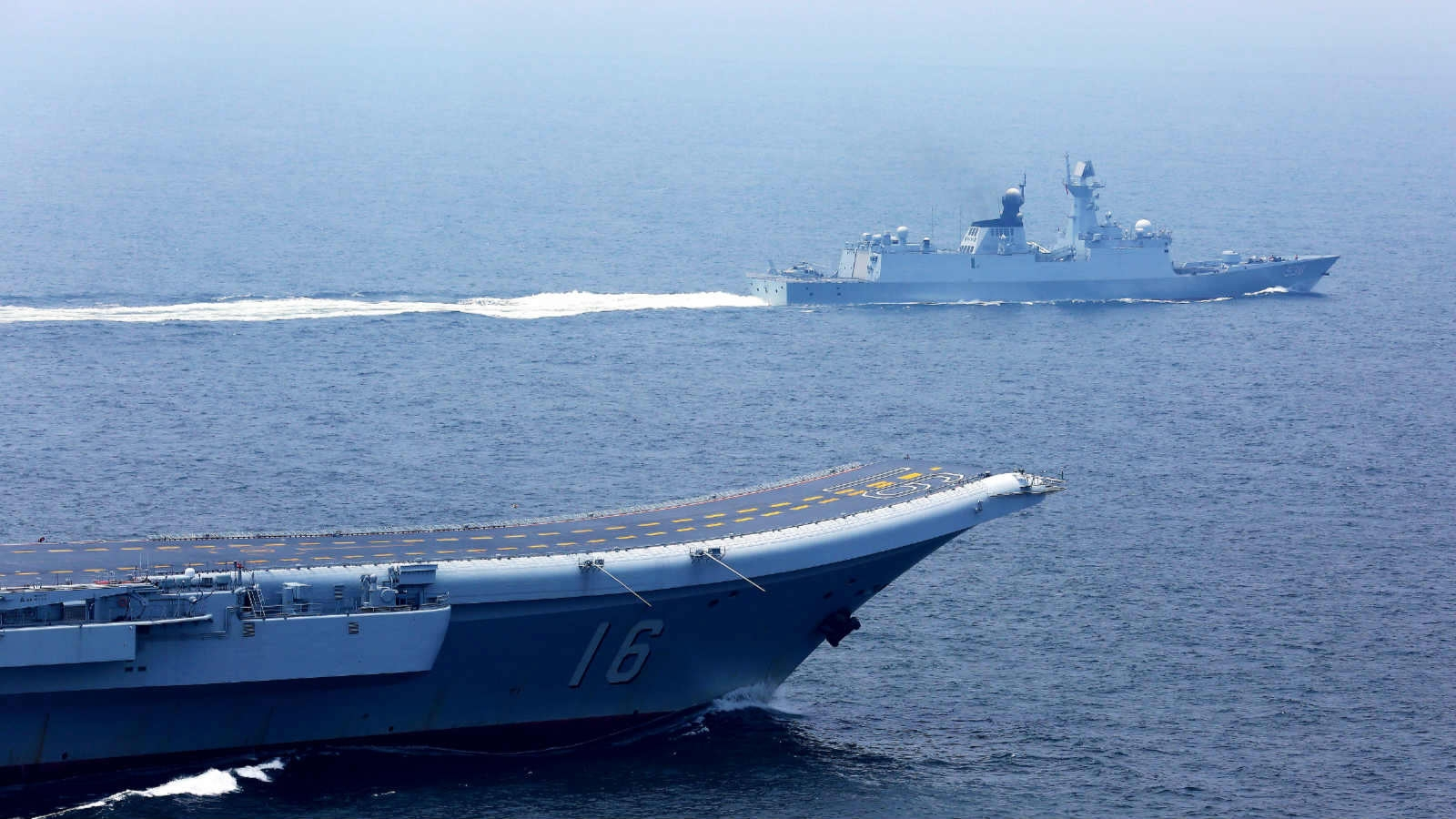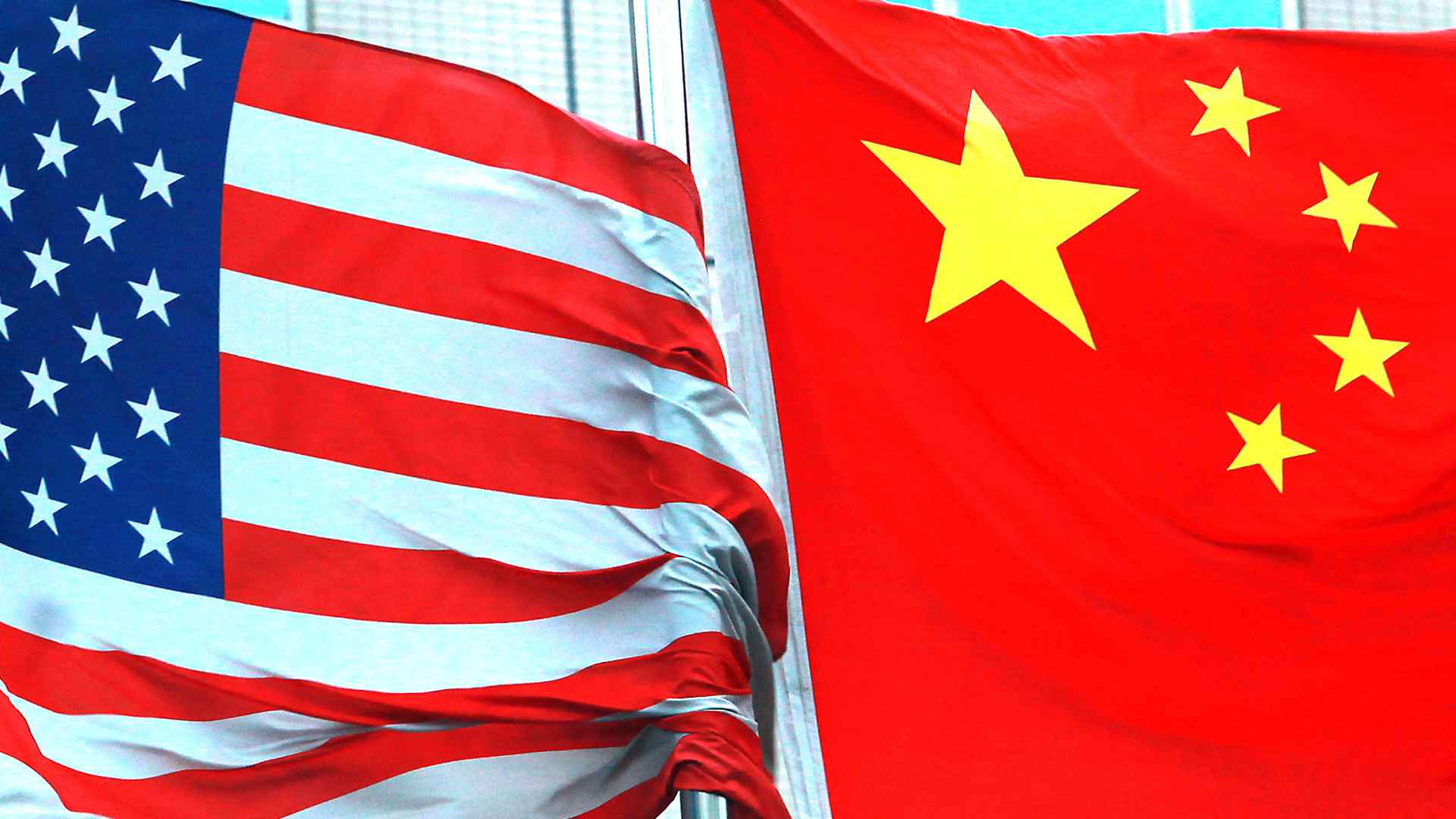Editor's note: Bobby Naderi is a journalist, current affairs commentator, documentary filmmaker and member of the Writers Guild of Great Britain. The article reflects the author's opinion, and not necessarily the views of CGTN.
For the United States to be a force for peace and stability in the South China Sea and the Taiwan Strait, it must turn away from the deadly arms trade with Taiwan, stop showing the flag and throwing grenades into Chinese maritime areas, and focus instead on abiding by international law, the one-China policy, and the three Sino-U.S. joint communiques.
This outlook was made crystal clear once again by Lu Kang, spokesperson for the Chinese Foreign Ministry, on June 6, when he urged the political class in Washington to stop stirring the waters and “realize the sensitivity of the issue and the harm this could bring to bilateral relations.”
Make no mistake: The Chinese waterway is not Washington's new Strait of Hormuz periphery for long-term great-power competition, and certainly, there exists no pretext for the Chinese island to beef up its forces and invest heavily in America's industry of death to stop the non-existent Chinese tanks and troops from landing across the Taiwan Strait.
Taiwan is not under what the Pentagon terms “growing threat from Beijing,” and certainly, this is not a new Cold War.
Washington needs to stop selling arms to the island and labeling it as a “close defense partner in U.S.-Indo Pacific strategy.” The latest salvo is not just about stirring the waters and Taiwan loading up on American military equipment, or the U.S. meddling in China's internal affairs and breaking from earlier commitments to Beijing; it's also about double opportunity.
The official Washington and Pentagon generals want to project power, police the region, and as a consequence, exert upon China the full impact of their influence in every domain.

In order to drive the waterway to the edge of instability, Washington further sends warships and guided-missile destroyers to needle and goad China on the pretext of “freedom of navigation operations.”
Less publicized in Taiwan, these provocative moves and other multi-domain engagements on the peripheries of China are intended to serve America's long-term strategic interests and future war-scape. They are not there to protect Taiwan.
Lest we forget, America's deadly arms business is a major cause of conflicts and tensions in other parts of the world, where many countries spend more on military expenditure and war than on regional stability and dialogue combined.
As they proceed down this path, the growing availability of U.S. arms, military support, naval presence and other provocative moves are similarly a major factor in the increase in the level of tensions in Chinese maritime areas. They provide no security for Taiwan but record profits for well-positioned American arms manufacturers.
It is precisely for these geopolitical calculations that U.S. government officials and Pentagon accountants brag, outrageously, about their “strong Taipei ties” and “export success” in weapons sales to Taiwan.
Here, enough simply isn't an option. They will try and find major boosts to future arms sales above and beyond what's already been sent, or would be sent, to the clueless Chinese island.
Taiwan's reported purchase of 108 M1A2 Abrams tanks, 1,240 TOW anti-armor missiles, 409 Javelin anti-tank missiles, 250 Stinger man-portable air defense systems and 66 additional F-16 fighter jets falls into this line of policy.

The aim is to keep the destabilization campaign moving forward, reorder the region to Washington's advantage, and weaken any efforts toward reunification and amity.
This should stun no one. The confirmation on June 6 by Taipei came after reports said the U.S. could soon give the green light to sales of tanks and weapons to Taiwan worth more than 2 billion U.S. dollars. It also came after senior military officials from Taiwan and the U.S. held their first meeting last month – after four decades – to strengthen military ties.
In this environment, expect no attempts to limit U.S. arms exports to Taiwan, as the arms sales under the U.S. Taiwan Relations Act are not based on an assessment of the island's defense needs.
The U.S. is therefore responsible for contributing to, rather than impeding, the militarization of the South China Sea and the Taiwan Strait. Tensions will not go away as long as the U.S. continues to sell arms to Taiwan and roil the Chinese territories.
Under the one-China policy and the three Sino-U.S. joint communiques, however, Washington is responsible for revoking all the existing arms export permits to Taiwan and refrain from issuing any new licenses. The U.S. government cannot ignore China's calls to end its lethal trade with Taiwan.
Sending more arms will foment insecurity and distrust. It won't encourage the political class in Taipei to sit down for talks with Beijing to find a solution to the long-drawn-out dispute over the legal and political statuses of the island.













